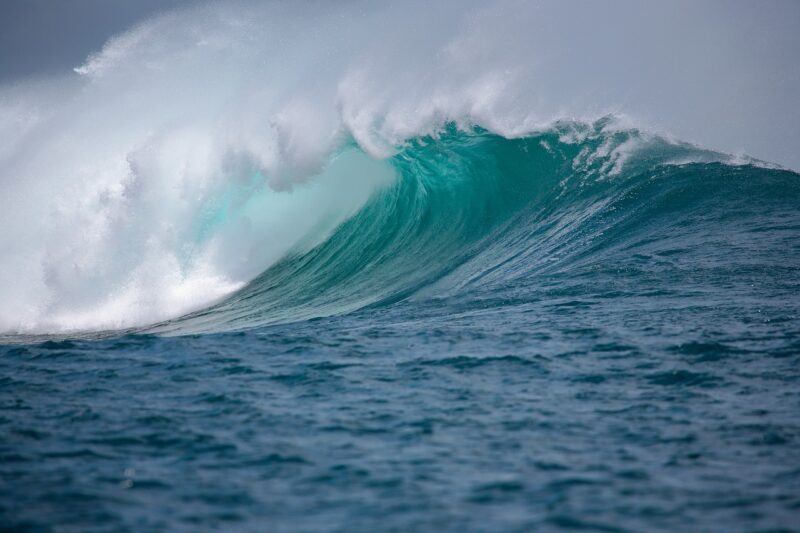The Unseen Forces of Nature: Examining Extraordinary Environmental Phenomena
November 18, 2024

The planet we inhabit is a treasure trove of extraordinary phenomena that often slip under the radar of our daily lives. From the mesmerizing displays of bioluminescence in ocean waves to the breathtaking patterns formed by desert dunes, these natural occurrences serve as poignant reminders of the incredible forces at work in our environment.
In this article, we will delve into some of the most captivating and, at times, mysterious environmental phenomena that reveal the power of nature.
1. Bioluminescence: Nature’s Living Light Show
Bioluminescence is one of the most beautiful phenomena in nature, where living organisms emit light through chemical reactions within their bodies. Found primarily in deep-sea creatures like jellyfish and certain species of plankton, this natural phenomenon can create stunning displays that illuminate the water in shades of blue and green.
Some locations, such as Mosquito Bay in Vieques, Puerto Rico, and the shores of the Maldives, become natural light shows, attracting tourists and scientists alike who seek to experience this glowing effect. The production of light serves various purposes: attracting mates, deterring predators, and luring prey.
2. Aurora Borealis: The Northern Lights
The Aurora Borealis, or Northern Lights, is an incredible optical phenomenon that occurs in high-latitude regions. This breathtaking light display is caused by charged particles from the sun colliding with gases in the Earth’s atmosphere, creating colorful ribbons of light in the night sky.
The best times to view the auroras are during the winter months, especially in countries such as Norway, Finland, Canada, and Iceland. The interplay of light colors—green, purple, red, and blue—creates a mesmerizing scene, making it a once-in-a-lifetime experience for those lucky enough to witness it.
3. The Great Blue Hole: An Underwater Wonder
The Great Blue Hole, located off the coast of Belize, is a massive underwater sinkhole that offers a unique glimpse into geological history and marine formations. Measuring over 300 meters across and 125 meters deep, this iconic marine feature is part of the Belize Barrier Reef Reserve System, a UNESCO World Heritage site.
Divers flock to the Great Blue Hole to explore its crystal-clear waters filled with a variety of marine life, including reef sharks and colorful fish. The formation of this hole is attributed to the cyclical rise and fall of sea levels, making it a visual narrative of Earth’s climatic changes over millions of years.
4. Salt Flats: Nature’s Mirror
The Salar de Uyuni in Bolivia is the most famous salt flat in the world, spanning over 10,000 square kilometers. After seasonal rains, these flats transform into a vast, shimmering mirror that captures the sky above, creating an otherworldly scene that seemingly stretches into infinity.
Salt flats are formed by the evaporation of water in enclosed basins, leaving behind a crust of salt. They are not only stunningly beautiful but also significant for the extraction of lithium, a key component in batteries for electric vehicles and electronics. Visitors flock to see this natural phenomenon, and photographers cherish the opportunity to capture its ethereal beauty.
5. Katabatic Winds: Gravity-Driven Currents
Katabatic winds are powerful, cold winds that flow downhill from high elevations due to gravity. These winds can reach speeds of over 100 km/h and are particularly noteworthy in polar regions, such as Antarctica and Greenland.
One of the most famous examples is the fierce katabatic winds of Antarctica, known for their ability to create blizzards and drastically reduce visibility. The phenomenon not only shapes the landscape but also impacts weather patterns in surrounding areas, demonstrating the intricate interactions between geographical features and atmospheric conditions.
6. Fire Rainbows: A Rare Meteorological Event
Fire rainbows, or circumhorizontal arcs, occur when sunlight passes through ice crystals in cirrus clouds at a specific angle. Unlike the traditional rainbow that forms from raindrops, these colorful arcs form parallel to the horizon and can create vivid displays of red, orange, and yellow hues.
This rare phenomenon can be best observed during summer when high, thin clouds are present and conditions are just right. Fire rainbows are stunningly beautiful and serve as a reminder of the delicate balance between atmospheric conditions and optical phenomena.
Conclusion
The natural world is filled with extraordinary phenomena that highlight the beauty and complexity of our environment. By exploring these unseen forces, we gain a deeper understanding of the interconnectedness of ecosystems, the power of geographical features, and the ongoing processes that shape our planet.
As we continue to witness and study these phenomena, it is incumbent upon us to protect and preserve these awe-inspiring aspects of nature for future generations to cherish and learn from. Understanding the tremendous forces that create these environmental wonders will ultimately lead to greater appreciation and conservation efforts in facing challenges such as climate change and habitat loss.
Let us celebrate the unseen forces of nature, as they remind us not only of our planet’s physical beauty but also of its endless mysteries waiting to be uncovered.







